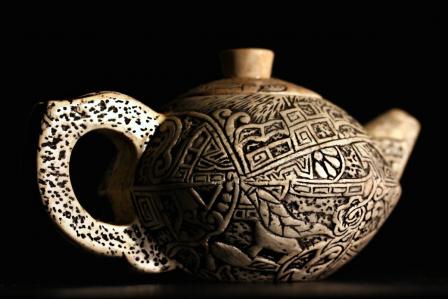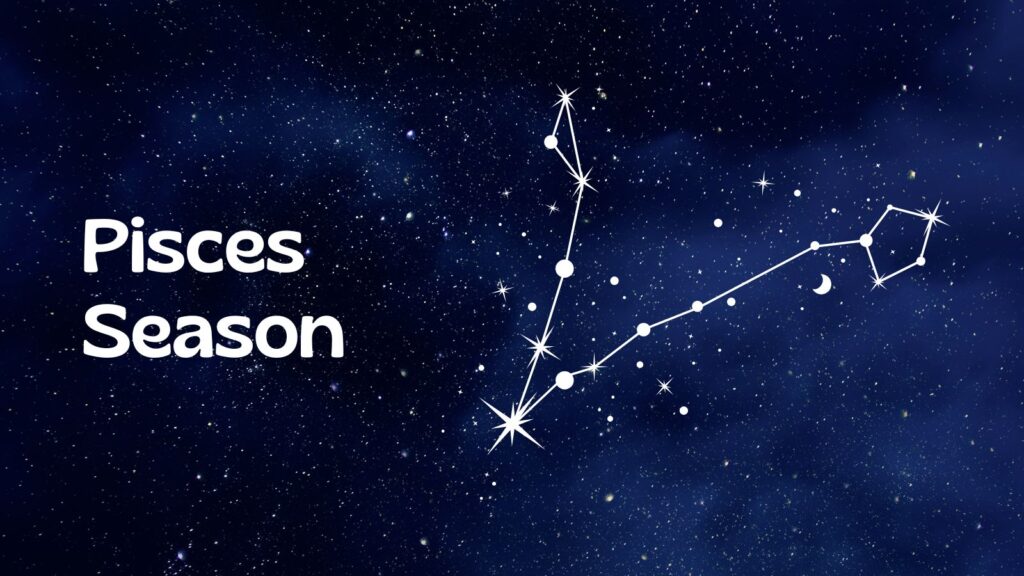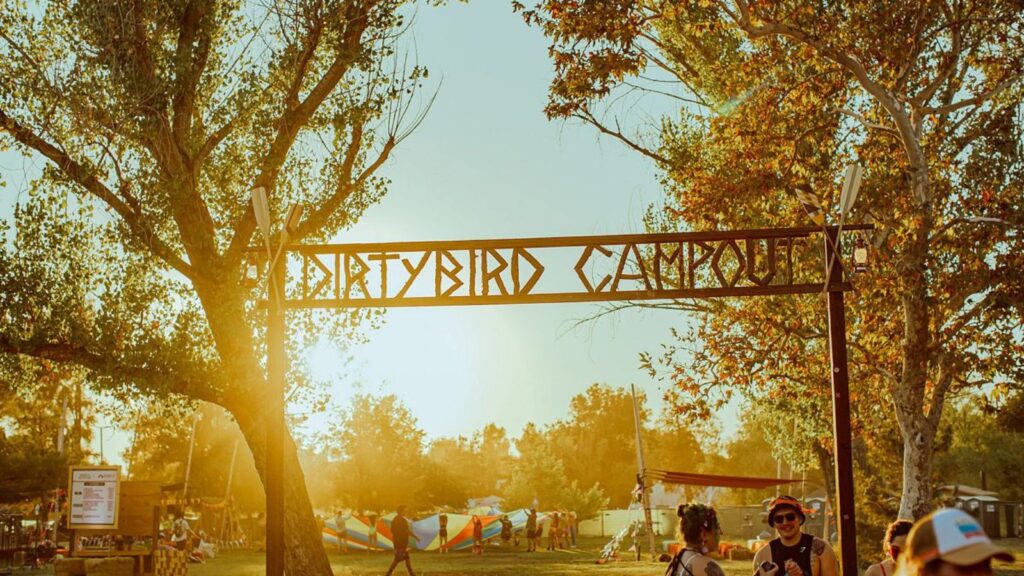The following is the twenty-fourth installment from Sacred Economics: Money, Gift, and Society in the Age of Transition, available from EVOLVER EDITIONS/North Atlantic Books. You can read the Introduction here, and visit the Sacred Economics homepage here.
The appearance of life in space may be compared with some kind of awakening, almost as if–as it comes to life–space itself, the very matter, wakes up, awakens, and it is this awakening of space in varying degrees–indeed in infinitely varying degrees–that we recognize when we see life in space, when we see life in buildings, in the mountainside, in a work of art, in the smile upon a person’s face.
–Christopher Alexander
Most of this book has been about money, which is the usual subject of “economics” today. On a deeper level, though, economics should be about things, specifically the things that human beings create, why they create them, who gets to use them, and how they circulate.
When I drive through American suburbia with its fast food restaurants, enormous boxy stores, and cookie-cutter subdivisions, or look upon the architecture of modern office buildings and residential high-rises, I cannot help but marvel at the ugliness of it all. Compared to the charm and the intense vitality that imbues older objects and structures, ours is a deeply impoverished world. I marvel, with indignation bordering on outrage, that we can live in such an ugly world after thousands of years of advances in material technology. Are we really so poor that we can afford no better? What was the point of all this sacrifice, all this destruction, if we are poorer in the finer things of life, the beautiful and the unique, than a Medieval peasant was? Looking at the artifacts of bygone times, I am impressed by their vibrancy, the intense quality of life within them. Today, almost everything we use, even if it is expensive, is cheap, reeking of phoniness, indifference, and salesmanship.
Let’s begin with the example of buildings and apply it to other artificial things. Our buildings are generally of two basic types. The first is the unapologetically utilitarian: warehouses, supermarkets, retail outlets, and so on, which aim to serve a function as cheaply as possible. Aesthetics is not a concern. The second type of building does try to incorporate aesthetic elements, but these are either inconsequential add-ons to the underlying functional efficiency, like arches on the porch of a suburban house that serve no structural purpose, or they actually come at the expense of function.
These two types of buildings correspond to two devastating misconceptions about beauty. The first is that beauty is a by-product of devotion to utility and practical efficiency. As the architect Christopher Alexander puts it,
Because of our still-prevailing 20th-century viewpoint, students are convinced that “beauty” comes about as a result of the concern with practical efficiency. In other words, if you make it practical and efficient, then it will follow that it becomes beautiful. Form follows function! … They–often the most rational and most intelligent students–have an almost moralistic passion in their desire to prove that these beautiful things must have been produced by purely functional thinking.1
The modern built environment abundantly demonstrates that this is not the case, that beauty does not necessarily arise from the pursuit of efficiency. Yet, neither is it true that beauty is irrelevant to functional efficiency, as the fake-seeming adornment of so many contemporary buildings implies. That is the second misconception about beauty: that it is something extra, something distinct from function. Hence we draw a distinction between the aesthetic and the practical, the fine arts and the applied arts. Art, like mind, like spirit, becomes a rarefied realm not to be sullied with concerns of practicality. Accordingly, the world of art meshes quite poorly with the realm of commerce, and especially with that epitome of worldliness: money.
The first misconception about beauty corresponds to the worldview of Cartesian science; the second to the worldview of Cartesian religion. The first corresponds to the belief that beauty, life, and soul are secondary properties, epiphenomena, not measurable and therefore not real. You take an organism apart, and you get just a bunch of matter, a bunch of elements, some carbon, some nitrogen, some phosphorus … where is the ingredient you can call life or spirit? The mentality of religion, on the other hand, appears superficially to contradict science by saying that spirit is a real ingredient in life that science doesn’t see. But on a deeper level it agrees: it agrees that spirit does not inhere in matter but occupies a separate, nonmaterial realm. Both agree that if there is such a thing as a spirit of life, it is something separate from matter, an extra ingredient. A parallel mind-set makes beauty an extra ingredient on top of function.
And so, even those things that we use today that try to be beautiful as well as functional usually bear a certain inauthenticity. The beauty seems snazzy, gimmicky; it doesn’t go very deep. Real beauty, which I might call life or soul, goes to the very heart of an object, and it is inseparable from its function, not secondary to the perfection of function. It evokes the paradoxical feeling, “This is more beautiful than it has to be, yet it could be no other way.” It is identical to the feeling I get when I contemplate the beauty of a cell or a sunset or the mathematical object known as the Mandelbrot set. There is no reason for such beauty, such order out of chaos–it seems like a marvelous though gratuitous gift. The world would keep spinning around if sunsets were ugly, or raspberries not quite so delicious, would it not? Yet none of these could be any other way.
It is not that focus on functionality brings about beauty as well; it is that the creative principles and creative spirit that go into making something beautiful are the same that go into making it functional. It starts with the intention to make something the best one can. I was going to use the word perfect here, but perfect carries connotations of exactitude and undeviating regularity that have little to do with beauty, life, or soul, and in fact make an object soulless. So let us say the intention is to be a perfectly faithful servant to the creation that is being born through us.
An integrated pursuit of utility and beauty reveals that the same principles often underlie both. Christopher Alexander lays out fifteen such principles in his profound book The Nature of Order. These fifteen fundamental properties characterize both natural systems and sublime works of architecture and art. They include levels of scale, strong centers, positive space, local symmetries, deep interlock and ambiguity, boundaries, roughness, gradients, and many others. But the key to his conception of wholeness, order, and life is the concept of centers: entities that, like elements, add up to create the whole but, unlike elements, are themselves created by the wholeness.2 “The wholeness is made of parts; the parts are created by the wholeness.” Anything that has the quality of aliveness will be composed of centers within centers within centers, wholenesses within wholenesses, each creating all the others.
The human being is no exception. Just as society is composed of human beings, so also is the human being a product of the society. Remember the truth of the connected self: we are our relationships. Moving inward a level, we could say the same for the relationship between ourselves and our organs. This is a universal truth of life. An economy that is alive, that is sacred, that is an extension of ecology, must have the same properties. And each object of that economy, each object that human beings create and circulate, must embody connection to all that environs it. Today, ours is an economy of separation: standard commodities that bear no relationship to the individual user, buildings that bear no relation to the land they occupy, retail outlets that bear no connection to local production, and products made in obliviousness to their effects on nature and people. None of these can possibly be beautiful, alive, or whole.
Although we might describe its properties, beauty, life, or soul cannot be reduced to a formula. It can be found in simplicity, such as Shaker furniture, or in ornateness, such as the Masdi-i-Shah or the Tomb of Mevlana. Alexander offers some powerful ways to recognize it. In comparing objects, we can ask ourselves, “Which of these has more life?” “Which of these is more a mirror of my self?” “Does this object make me feel my humanity is expanding–or contracting?”
Accordingly, to create objects with soul, objects for a rich and beautiful world, we must invest them with life, self, and humanity; in other words, we must invest them with something of our selves. No matter what money system we have, if it does not induce or allow this kind of creative process, then we will not be living in a sacred economy. By the same token, by fostering within ourselves a realization of the sacredness inherent in materiality, and by aligning our work with that sacredness, we lay the social and psychic foundation of an economy in which more and more of the things we make and do for each other are beautiful, personal, alive, and ensouled.
The pursuit of this kind of wealth has not been a public priority for any part of the ideological spectrum for several hundred years. The twentieth-century socialists, for example, rejected any fripperies or indulgences that didn’t further measurable material welfare, preferring the squat utilitarianism of rational efficiency in their grand project of maximizing production to bring plentiful, cheap goods to the masses. The same austerity expected of the socialist comrade extends to the progressive activist today, who is supposed to eschew fine living in pursuit of altruistic ideals. And establishment capitalism is little different: it has re-created and perfected the painfully ugly, utilitarian buildings and objects of socialism. I remember as a child hearing of the horrors of life in the Soviet Union. There was supposedly only one kind of store, a gigantic windowless dispensary staffed by listless, surly functionaries selling cheaply made, generic goods. It sounds a lot like Wal-Mart. Oh, and parents had to send their children, as young as two years old, to mandatory state-run day care–even parenting had been abolished. Here today it is nearly the same, with economic exigency replacing state force. In any event, we have created a material world devoid of soul, barren of life and killing of life. All for what? The pursuit of efficiency, the grand project of maximizing the production of commodities, and underneath that, the domination and control of life. This was to be the paradise of technology, life under control, and finally we see it for what it is: the strip mall, the robotic cashier, the endless parking lot, the extermination of the wild, the living, the messy, and the sacred.
A sacred object embodies something of the infinite. It is, therefore, intrinsically antithetical to the commodity, which is defined by a finite list of measurable specifications. And, as we have seen, the homogeneity of money induces the same in everything it touches, dragging all into the commodity realm. The shrinkage of the money realm described in Chapter 14, then, holds the possibility of liberating more and more of our things from the chains of commodity. After all, we have a surfeit of manufactured goods, the result of standardized mass production and efficiencies of scale. Our tremendous overcapacity indicates that we don’t need these efficiencies, nor so much mass production. Trapped by the madness of growth-demanding money, we compulsively produce more and more cheap, ugly things we don’t need while suffering a poverty of things that are beautiful, unique, personal, and alive. That poverty, in turn, drives continued consumption, a desperate quest to fill the void left by a material environment bereft of relatedness.
Touching on this topic in Chapter 2, I wrote, “The cheapness of our things is part of their devaluation, casting us into a cheap world where everything is generic and expendable.” For a long time now, we have cared less and less about our things. We in rich countries don’t even bother repairing most things anymore, as it is usually cheaper to buy new ones. However, much of this cheapness is an illusion coming from the externalization of costs. When we must pay the true price for the depletion of nature’s gifts, materials will become more precious to us, and economic logic will reinforce, and not contradict, our heart’s desire to treat the world with reverence and, when we receive nature’s gifts, to use them well.
Ultimately, then, sacred economics is part of the healing of the spirit-matter divide, the human-nature divide, and the art-work divide that has increasingly defined our civilization for thousands of years. In our journey of separation, we have developed amazing creative tools of technology and culture that would never have existed had we not departed from our original wholeness. Now it remains to recover that wholeness and bring it to a new realm, to create with nanotechnology and social media things of the same life, beauty, and soul that the old masters created with adzes and song.3 Let us insist on nothing less. For what purpose have our forebears sacrificed, if not to create a beautiful world?
We are born creators, here to achieve the exuberant expression of our gifts. The underlying connection between beauty and function suggests a parallel harmony between survival and the expression of our gifts. The old divide between making a living and being an artist will crumble, is already crumbling. So many of us, more and more of us, are refusing that divide. No object will be too insignificant to merit our care, our reverence, and our effort to make it right. We will seek–are already seeking–to embed all things in wholeness. All of the movements I have described in this book are carrying us toward a world that beautiful. The social dividend, the internalization of costs, degrowth, abundance and the gift economy, all take us away from the mentality of struggle, of survival, and therefore of utilitarian efficiency, and toward our true state of gratitude: of reverence for what we have received and of desire to give equally, or better, from our endowment. We wish to leave the world more beautiful than we entered it.
How beautiful can life be? We hardly dare imagine it. I caught my first glimpse of it at the age of nineteen when I visited the National Palace Museum in Taiwan. It contained objects that, had I not seen them with my own eyes, I would not have believed could exist. I remember in particular a teapot, the emperor’s teapot, an object of such beauty and perfection that it seemed to harbor the soul of a god. True wealth would be for everyone to live surrounded by objects like that, objects made by masters in the full flush of their genius. I don’t believe that such mastery is available only to a few; rather, it is because our gifts are so suppressed that few achieve such mastery. Thankfully, we have the record of the past to remind us of what is possible. I look at great works such as that teapot and think, “The kind of person who made this does not exist anymore.” Such objects are beyond the capacity of any human living in this degenerate age. Yet the possibility lives on in our humanness, and we are on the way to its recovery.
Christopher Alexander tells a story of his visit to the Tofuku-ji temple in Japan, a masterpiece of architecture, in which he wanders up a flight of stone stairs that narrows between two hedges and then stops, leaving him no choice but to sit on the top step–a perfect spot, quiet and breezy after a long climb. A blue dragonfly sits next to him. He writes,
I was suddenly certain that the people who had built that place had done all this deliberately. I felt certain–no matter how peculiar or unlikely it sounds today, as I am telling it again–that they had made that place, knowing that the blue dragonfly would come and sit by me. However it sounds now, at the time when it happened, while I sat on that stair, there was no doubt in my mind at all that there was a level of skill in the people who had made this place that I had never experienced before. I remember shivering as I became aware of my own ignorance. I felt the existence of a level of skill and knowledge beyond anything I had ever come across before. (437)
Such skill, transcending what we think is possible, is latent within all of us today. The great project of humanity is to recover it, and build a world upon it.
—
1. Alexander, The Nature of Order, 423.
2. As a matter of fact, even physical elements, far from being discrete building blocks of matter, are themselves created by the wholeness even as they create the wholeness. An electron exists only in relationship. This is a universal principle; ugliness results when we pretend otherwise.
3. I am not saying that we should cease using adzes and song but that the entire spectrum of our technology should be turned toward the enrichment of spiritual life.
Image by paloetic, courtesy of Creative Commons License.













